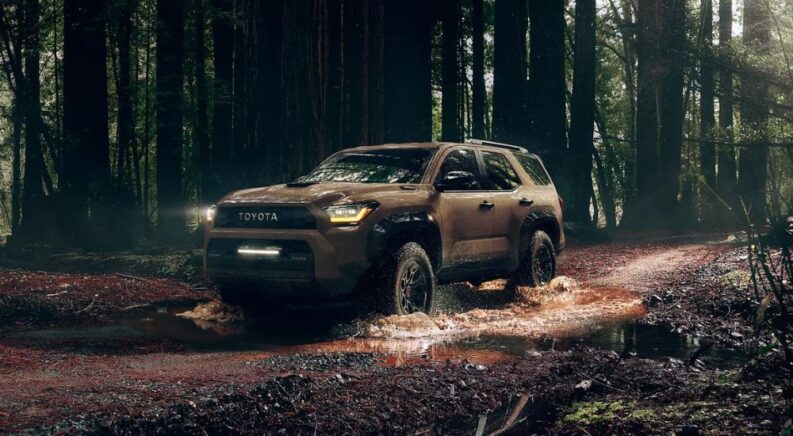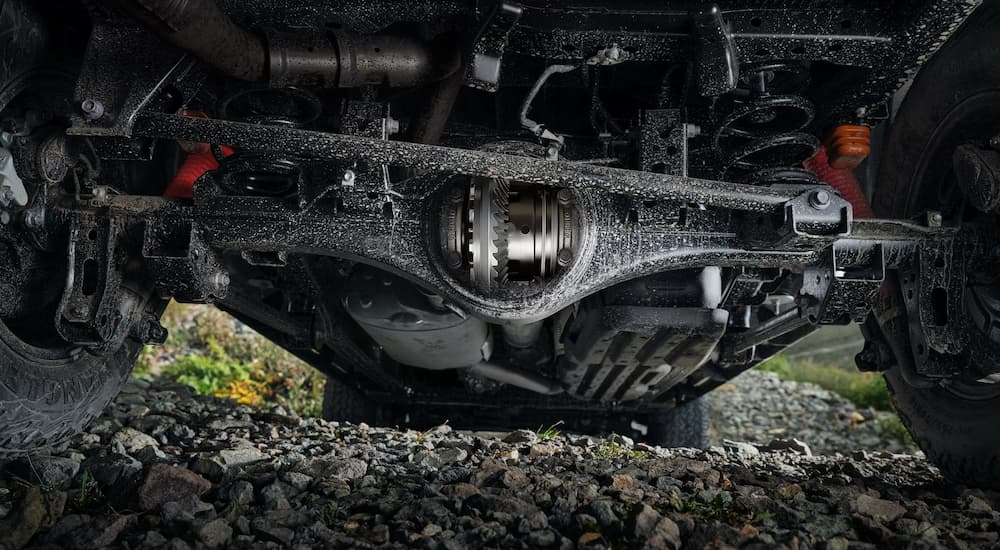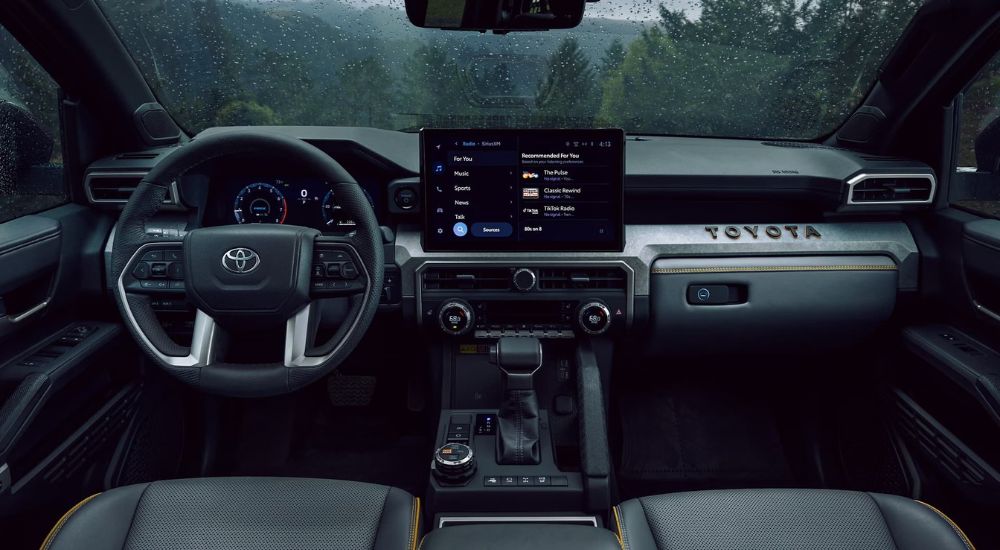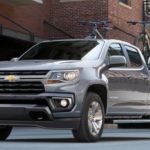Shared vehicle platforms have become all the rage in the automotive industry. It makes sense from a business perspective. Multiple cars, trucks, or SUVs based on the same underpinnings enable manufacturers to develop new models faster and more efficiently. However, this makes it more challenging for drivers to decide which vehicle is right for them.
Such is the case when trying to choose the 2025 Toyota Tacoma or 4Runner for off-roading. You have the popular midsize pickup truck in one corner and the legendary midsize SUV in the other. Today, they’re both based on the same TNGA GA-F platform, have the same powertrain options, and most of the same trims, too. Should you find a Toyota Tacoma for sale, or go with a 4Runner instead?
Today, I’ll try to answer that question. While the platform and powertrain tie these vehicles together, some differences give each machine an advantage in certain areas. As such, the choice depends on what type of off-roading and adventuring you want to do. Join me in exploring the 2025 Tacoma and 4Runner to see how they stack up against each other.
Drivetrain and Suspension
Most of the drivetrain and suspension components in the 2025 Tacoma and 4Runner are identical. Most trims have an independent double-wishbone front suspension, multi-link coil rear suspension, and dual stabilizer bars. Certain upgrade packages, such as the available Adaptive Variable Suspension, Multi-Terrain Select system, and locking rear differential, are also universal. Once you dig beneath the surface, though, there are key variations on certain trims that change how they drive.
The 2025 4Runner is exclusively available with an eight-speed automatic transmission. This is also available in the Tacoma, but it also offers a six-speed manual transmission, offering more personalized control for off-roading and towing. Off-roaders who prefer to row their own have a clear choice here.
The Tacoma SR and SR5 trims offer a more barebones design with a single stabilizer bar and a traditional leaf spring rear suspension. This setup is incredibly durable for heavy-duty driving, but it may mean a rougher on-road driving experience, which may make a 4Runner or a higher trim Tacoma a better choice for pavement. Also, the Tacoma’s specialized off-road suspensions on the Trailhunter and TRD Pro trims include a one-inch front and rear suspension lift. The 4Runner trims do not receive this lift.
The only 4WD option for the Tacoma is part-time 4WD with a two-speed transfer case. While the 4Runner offers this on most trims, the Limited and Platinum are available with full-time 4WD for those who frequently drive on loose terrain or wet roads. The Tacoma’s part-time 4WD system also includes active traction control. Some trims of the 4Runner offer large 20-inch wheels for better overall grip and stability. The Tacoma’s biggest wheel size is 18 inches, which can mean more nimble handling and better performance on loose surfaces.
It may not technically be the suspension, but there’s one more important item to note. Even though they’re on the same platform, the Tacoma is approximately 20 inches longer and slightly taller than the 4Runner. This makes the Tacoma more stable, but it requires more space to make turns.
Towing and Payload
Next is how these Toyotas get all your goodies from point A to point B. If you want the highest possible towing capacity, the 2025 Toyota Tacoma is the best bet at 6,500 lbs, while the Toyota 4Runner maxes out at 6,000 lbs. That 500 lbs may not seem like much, but it could be the difference between getting a boat to your favorite lake or bringing three UTVs to the local trails instead of two. Equipment like an integrated trailer brake controller, backup guidance system, and camera is available on more Tacoma models than 4Runner models.
Interestingly, the 2025 4Runner does have an advantage in one towing area. Every 4Runner trim has front and rear tow hooks for pulling yourself up hills or rescuing adventure mates. The 2025 Tacoma only has these recovery points on the Trailhunter and TRD Pro trims. So the Tacoma is better for planned towing, while the 4Runner is better for on-the-spot towing.
As for payload capacity, the Tacoma is the clear winner. It reaches 1,610 lbs on the TRD Off-Road trim with the standard engine and 1,680 lbs with the hybrid-equipped TRD Pro. On the 4Runner, the maximum payload is 1,400 lbs with the standard engine and only 1,050 lbs with the hybrid. Again, this can be the deciding factor in what you can bring for supplies and people on an expedition.
Cargo and Interior
This is a classic truck vs SUV debate, and it’s not surprising what the outcome is here. The 2025 Tacoma is available with a five-foot or six-foot bed that includes a deck-rail system and various tie-down points. This is great for quickly unloading equipment and keeping it from sliding around. However, capacity peaks at around 38 cu.ft. for the long bed and 33 cu.ft. for the short bed. You also need to get a separate cap or bed cover if you want weather protection.
Conversely, the 2025 Toyota 4Runner has 48.4 cu ft. of cargo space with the rear seats up and 90.2 cu ft. with the seats folded down. (The hybrid model is still impressive at 42.6 and 82.6 cu.ft. but takes away a little space for the extra batteries.) Although the Tacoma can support more total weight, the 4Runner wins in sheer volume. Getting an SUV also means that cargo is shielded and lets you add roof rails for even more loading options.
As for passenger comfort, both vehicles have 41.8 inches of front legroom, but the 4Runner has a little more rear legroom than the double-cab Tacoma (the XtraCab doesn’t even have rear seats). The 4Runner also has a little more front headroom. However, the double-cab Tacoma gets the edge in rear headroom, shoulder room, and hip room. The tech is largely the same, but the 4Runner gets a couple more available safety features like lane keeping assistance, and the premium JBL sound system has 14 speakers compared to 10 in the Tacoma.
For the final touch, I want to discuss the available 120V AC power supplies. Tacomas with this feature have one outlet in the bed (400W or 2400W). The 4Runner does not offer this option. It’s a surprising win for running equipment and appliances.
Choosing Between the Tacoma and 4Runner
If you’ve read about all the differences and still can’t decide, or if you skipped to the end, here are my recommendations for whether to go Tacoma or 4Runner:
Get the 2025 Toyota Tacoma if you like intense off-roading and overlanding, do a lot of towing and hauling, pack heavy equipment and similar items, like the convenience and utility of a truck bed, or want a manual transmission.
Get the 2025 Toyota 4Runner if you want a balance of good on-road and off-road performance, prefer a shorter vehicle for navigating tight spaces, want increased cargo space and protection, or need full-time 4WD.
No matter which Toyota you pick, you’re getting many shared components and features that are great for adventure seekers. There’s the available hybrid powertrain with 465 lb-ft of torque, all-LED exterior lighting for amazing visibility, heated and ventilated front seats for comfort in any weather, and multimedia that includes a 14-inch touchscreen on most models. Like many things in life, there is no wrong answer. Selecting the Tacoma or 4Runner depends on what qualities are most important for you.






